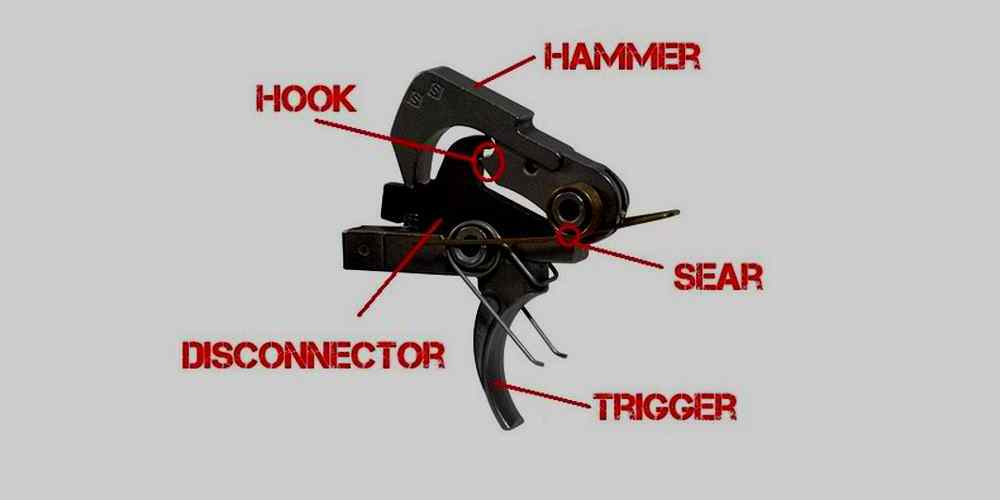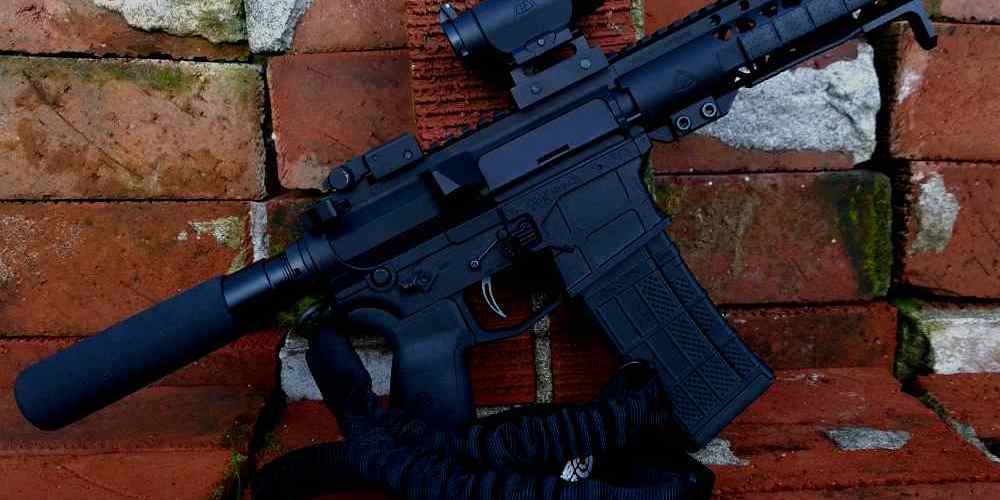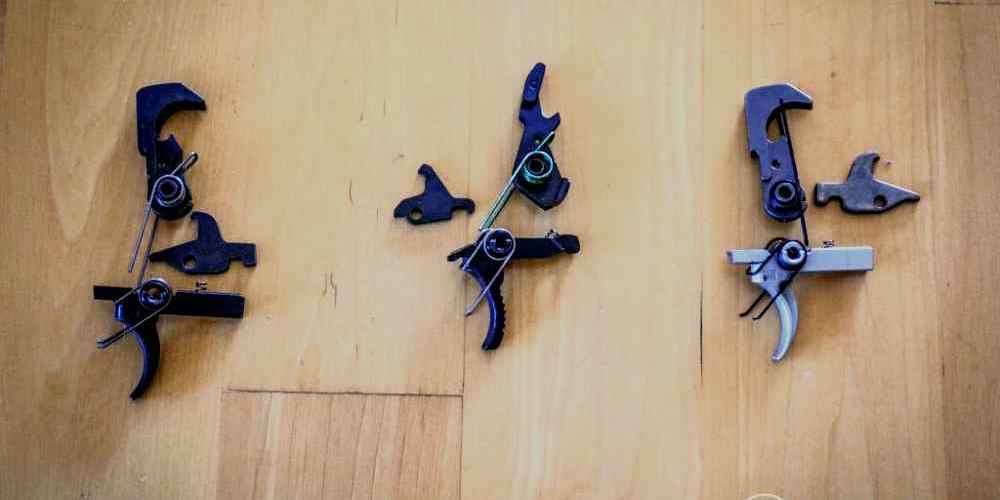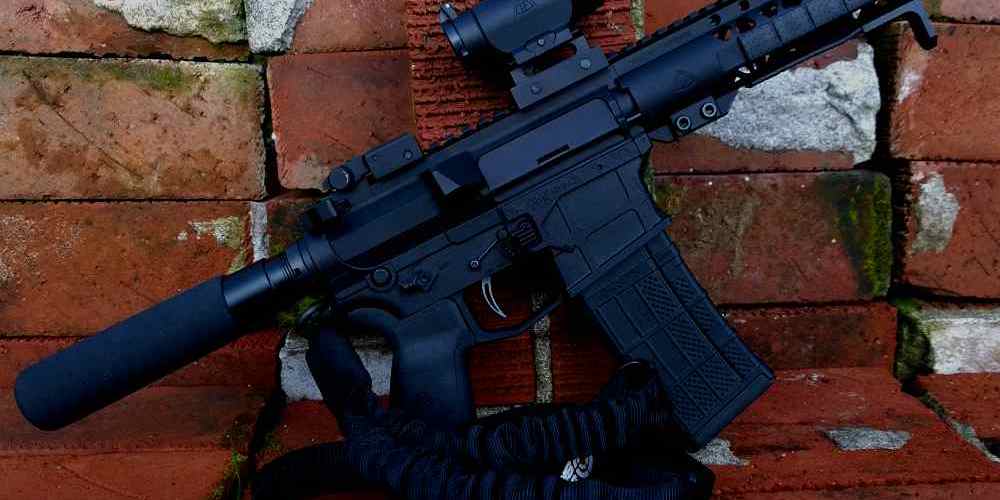“Master the slope, master the shot: Understanding AR15 trigger slope for precision shooting.”
Importance of Understanding AR15 Trigger Slope
When it comes to shooting accuracy and precision, understanding the intricacies of your AR15 trigger slope is crucial. The trigger slope refers to the angle at which the trigger moves before it breaks and fires the gun. This seemingly small detail can have a significant impact on your shooting performance, making it essential to grasp its effects.
One of the primary reasons why understanding trigger slope is important is its influence on trigger control. A steeper trigger slope requires more force to break, which can lead to jerky movements and decreased accuracy. On the other hand, a shallower trigger slope allows for smoother and more controlled trigger pulls, resulting in improved shot placement.
Furthermore, trigger slope can also affect the speed at which you can shoot accurately. A shallower slope enables faster follow-up shots, as the trigger can be reset more quickly. This is especially crucial in competitive shooting or self-defense situations where rapid and precise shooting is essential.
Another key aspect to consider is the psychological impact of trigger slope on the shooter. A trigger with a steep slope can create anticipation and anxiety, leading to flinching or jerking the trigger. This can significantly impact your shooting consistency and overall performance. Understanding and adjusting the trigger slope to suit your preferences can help alleviate these issues and improve your shooting experience.
In addition to trigger control and speed, trigger slope also plays a role in trigger reset. A shallower slope allows for a shorter reset distance, enabling faster follow-up shots. This can be particularly advantageous in dynamic shooting scenarios where quick target transitions are necessary.
Moreover, understanding trigger slope can help you customize your AR15 to suit your shooting style and preferences. By adjusting the trigger slope to your liking, you can optimize your shooting performance and enhance your overall shooting experience. Whether you prefer a lighter or heavier trigger pull, knowing how trigger slope affects your shooting can help you make informed decisions when selecting or modifying your trigger.
It is essential to note that trigger slope is just one of many factors that contribute to shooting accuracy and performance. Factors such as trigger weight, reset distance, and overall trigger feel also play a significant role in determining how well you shoot. However, understanding trigger slope and its effects can give you a deeper insight into your shooting mechanics and help you fine-tune your shooting skills.
In conclusion, understanding AR15 trigger slope is crucial for improving your shooting accuracy, speed, and overall performance. By grasping how trigger slope influences trigger control, speed, reset, and psychological factors, you can optimize your shooting experience and enhance your shooting skills. Whether you are a competitive shooter, a recreational shooter, or a self-defense enthusiast, knowing how trigger slope affects your shooting can make a significant difference in your shooting performance. So take the time to learn about trigger slope and its effects, and watch your shooting skills improve.

How Trigger Slope Affects Shooting Accuracy
When it comes to shooting accuracy, there are many factors to consider, and one of the most important is the trigger slope of your AR15. The trigger slope refers to the angle at which the trigger moves before it breaks and fires the gun. This seemingly small detail can have a significant impact on your shooting performance, so it’s essential to understand how it works and how it can affect your accuracy.
The trigger slope of an AR15 can vary depending on the manufacturer and model of the gun. Some triggers have a steep slope, meaning that there is a significant amount of movement before the trigger breaks. Others have a more gradual slope, with less movement required to fire the gun. The slope of the trigger can affect how quickly and smoothly you can pull the trigger, which in turn can impact your accuracy.
A steep trigger slope can make it more challenging to shoot accurately, as it requires more force and movement to fire the gun. This can lead to jerky or uneven trigger pulls, which can throw off your aim and result in missed shots. On the other hand, a trigger with a more gradual slope can make it easier to shoot accurately, as it requires less force and movement to fire the gun. This can result in smoother, more consistent trigger pulls, which can improve your accuracy.
In addition to affecting your accuracy, the trigger slope can also impact your shooting speed. A steep trigger slope can slow down your rate of fire, as it takes longer to pull the trigger and fire the gun. This can be a disadvantage in situations where you need to shoot quickly and accurately, such as in competitive shooting or self-defense scenarios. A trigger with a more gradual slope, on the other hand, can allow you to shoot faster and more efficiently, as it requires less effort to fire the gun.
To determine the best trigger slope for your AR15, it’s essential to consider your shooting style and preferences. If you prefer a more deliberate, precise shooting style, you may prefer a trigger with a steeper slope that allows you to take your time and carefully line up your shots. On the other hand, if you prefer a faster, more dynamic shooting style, you may prefer a trigger with a more gradual slope that allows you to shoot quickly and accurately.
Ultimately, the best trigger slope for you will depend on your individual preferences and shooting needs. It’s essential to try out different triggers and slopes to see which one works best for you. You may also want to consider factors such as the weight and pull of the trigger, as these can also impact your shooting performance. By understanding how trigger slope affects shooting accuracy, you can make an informed decision and choose the best trigger for your AR15.
Different Types of Trigger Slopes for AR15
When it comes to shooting with an AR15, understanding the trigger slope is crucial for achieving accuracy and precision. The trigger slope refers to the angle at which the trigger moves before it breaks and fires the gun. Different types of trigger slopes can have varying effects on shooting performance, so it’s important to know how each one works and how it can impact your shooting experience.
One common type of trigger slope is the flat trigger. This type of trigger has a straight, flat surface that allows for a consistent pull every time. The flat trigger is popular among shooters who prefer a more predictable and precise trigger pull. With a flat trigger, there is less room for error, as the shooter can easily feel when the trigger is about to break.
On the other hand, the curved trigger slope is another popular option for AR15 shooters. The curved trigger has a rounded surface that allows for a smooth and comfortable pull. Some shooters find that the curved trigger provides a more natural feel and can help with shooting fatigue during long shooting sessions. The curved trigger slope can also make it easier to pull the trigger quickly and efficiently.
Another type of trigger slope is the hybrid trigger, which combines elements of both the flat and curved triggers. The hybrid trigger has a slight curve to it, but also features a flat surface at the end where the trigger breaks. This type of trigger slope can offer the best of both worlds, providing a comfortable pull with a predictable break.
When choosing a trigger slope for your AR15, it’s important to consider your shooting style and preferences. Some shooters may prefer a flat trigger for its consistency and precision, while others may prefer a curved trigger for its comfort and ease of use. Ultimately, the best trigger slope for you will depend on your individual shooting needs and preferences.
It’s also worth noting that the trigger slope can affect your shooting accuracy and precision. A trigger with a steeper slope may require more force to pull, which can lead to jerky movements and decreased accuracy. On the other hand, a trigger with a shallower slope may be easier to pull, but could result in a less predictable break.
In conclusion, understanding the different types of trigger slopes for AR15s is essential for improving your shooting performance. Whether you prefer a flat, curved, or hybrid trigger, choosing the right trigger slope can make a significant difference in your shooting experience. Experiment with different trigger slopes to find the one that works best for you, and remember to practice regularly to hone your shooting skills. With the right trigger slope and plenty of practice, you’ll be hitting your targets with precision and accuracy in no time.
Tips for Adjusting Trigger Slope for Optimal Performance
When it comes to shooting accuracy and performance, one of the key factors to consider is the trigger slope of your AR15. The trigger slope refers to the angle at which the trigger moves before it breaks and fires the gun. Understanding how trigger slope affects your shooting can help you make adjustments for optimal performance.
The trigger slope of your AR15 can have a significant impact on your shooting experience. A steeper trigger slope means that the trigger will break more suddenly, requiring more force to pull it all the way back. This can make it more difficult to shoot accurately, as the sudden break can cause you to jerk the trigger and throw off your aim.
On the other hand, a shallower trigger slope means that the trigger will break more gradually, requiring less force to pull it back. This can make it easier to shoot accurately, as the gradual break allows you to apply consistent pressure and maintain better control over your aim.
Adjusting the trigger slope of your AR15 can help you find the right balance between ease of shooting and accuracy. If you find that your current trigger slope is causing you to jerk the trigger and miss your shots, you may want to consider adjusting it to a shallower angle. This can help you maintain better control over your aim and improve your shooting accuracy.
On the other hand, if you find that your current trigger slope is too shallow and causing you to have a mushy trigger pull, you may want to consider adjusting it to a steeper angle. This can help you achieve a more defined break and improve your shooting performance.
When adjusting the trigger slope of your AR15, it’s important to do so carefully and methodically. Start by making small adjustments and testing your shooting performance after each one. This will help you find the right balance for your individual shooting style and preferences.
It’s also important to remember that adjusting the trigger slope of your AR15 can affect other aspects of your shooting, such as trigger pull weight and reset. Be sure to take these factors into consideration when making adjustments to ensure that you achieve optimal performance.
In conclusion, understanding the trigger slope of your AR15 and how it affects your shooting can help you make adjustments for optimal performance. Whether you need to adjust to a shallower angle for better control or a steeper angle for a more defined break, taking the time to fine-tune your trigger slope can make a significant difference in your shooting accuracy and overall performance. So, don’t be afraid to experiment with different trigger slopes and find what works best for you. Happy shooting!
Common Misconceptions about AR15 Trigger Slope
When it comes to shooting with an AR15, understanding the trigger slope is crucial for achieving accuracy and precision. Many shooters may not be aware of the impact that trigger slope can have on their shooting performance. In this article, we will explore common misconceptions about AR15 trigger slope and how it affects shooting.
First and foremost, it is important to understand what trigger slope actually means. Trigger slope refers to the angle at which the trigger moves before the sear releases and the shot is fired. A steeper trigger slope means that the trigger has less travel distance before the shot breaks, while a shallower trigger slope means that the trigger has more travel distance before the shot breaks.
One common misconception about trigger slope is that a steeper slope is always better for shooting accuracy. While it is true that a steeper trigger slope can result in a quicker shot break, it can also lead to a less predictable and consistent trigger pull. This can cause the shooter to anticipate the shot breaking, resulting in jerking or flinching, which can negatively impact accuracy.
On the other hand, a shallower trigger slope allows for a more controlled and consistent trigger pull. This can help the shooter maintain proper trigger discipline and follow-through, resulting in improved accuracy and precision. While a shallower trigger slope may require more travel distance before the shot breaks, the benefits of increased control and consistency far outweigh the slight delay in shot break.
Another common misconception is that trigger slope only affects shooting speed and has no impact on accuracy. While it is true that a steeper trigger slope can result in a quicker shot break, it can also lead to a less controlled and consistent trigger pull, which can negatively impact accuracy. In contrast, a shallower trigger slope allows for a more controlled and consistent trigger pull, resulting in improved accuracy and precision.
It is also important to note that trigger slope is just one factor that can affect shooting performance. Other factors, such as trigger weight, reset, and creep, also play a significant role in determining how a shooter performs with an AR15. It is essential to consider all of these factors when selecting a trigger for your AR15 to ensure optimal shooting performance.
In conclusion, understanding AR15 trigger slope is essential for achieving accuracy and precision in shooting. While there are common misconceptions about trigger slope, it is important to recognize that a shallower slope can lead to improved control and consistency, resulting in better shooting performance. By considering all factors that affect trigger performance, shooters can make informed decisions when selecting a trigger for their AR15.








